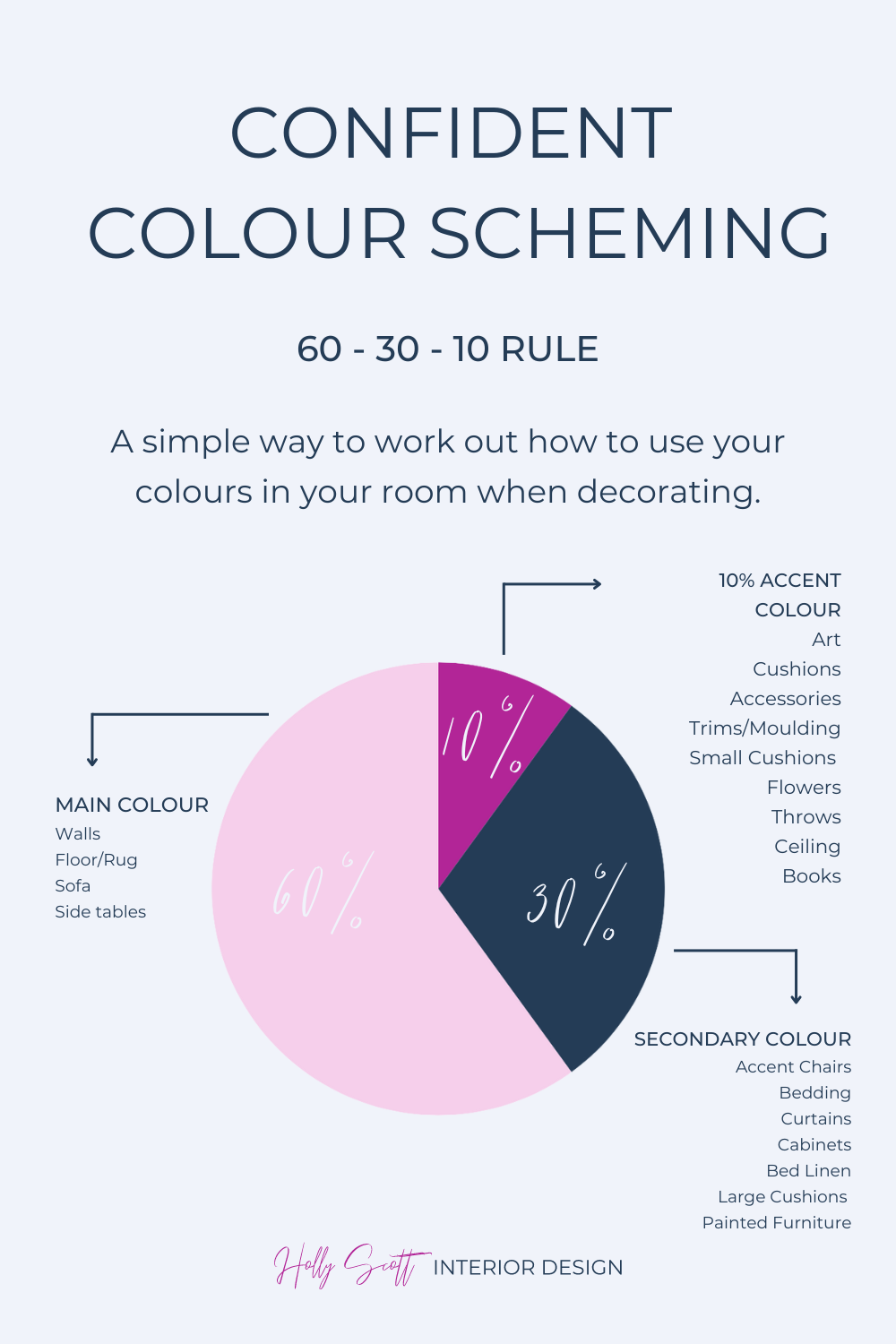Elevate Your Space: Mastering the 60-30-10 Rule in Interior Design
After running my colour workshop on Monday night the biggest takeaway was the 60-30-10 rule so I thought I should share more in this to help you create your dream home. This is a fundamental principle in interior design known as the 60-30-10 rule. This simple yet powerful framework can help you create beautifully balanced and harmonious spaces in your home. Let's explore how you can apply it to elevate your decor.
What is the 60-30-10 Rule in Interior Design?
The 60-30-10 rule is a guideline for creating a balanced colour scheme in any room. It suggests dividing your colours into three distinct percentages:
Primary Colour (60%): This is the dominant colour of the room and will cover most of the space. Think walls, large furniture pieces, and the majority of decor items. This colour serves as the backdrop and sets the overall tone of the room.
Secondary Colour (30%): The secondary colour supports the primary colour without overpowering it. It should be used in furniture, textiles, curtains, and other larger decor items. This colour adds interest and depth to the room.
Accent Colour (10%): The accent colour is used sparingly to add pops of colour and create focal points. It is typically found in smaller accessories like throw pillows, artwork, decorative objects, or a statement piece of furniture. This colour adds personality and flair to the room.
In this Living Room Design I used 60% pale neutral, 30% hot pink and 10% dark mushroom.
Why Follow the 60-30-10 Rule?
Harmony: This rule ensures a harmonious and well-balanced colour palette, preventing any one colour from overwhelming the space.
Visual Interest: By using a structured approach to colour, you can create visual interest and depth, making your interiors more dynamic and appealing.
Ease of Design: It simplifies the decision-making process, providing a clear framework to follow when choosing colours and decor elements.
Here you can see the difference that using the 60-30-10 rule (the on the right) has over using equal amounts of 2 colours (on the left). Using this rule creates so much more depth and harmony.
Applying the Rule to Your Home
Choose Your Colours Start by selecting your primary, secondary, and accent colours. Consider the mood you want to create and the existing elements in the room as well as thinking about how you want to feel in this space and make sure you select colours that reflect this feeling. This is something we cover in detail in Happy Home Design, as there is a whole module about colour and I take you through the process of working out how to select colour to reflect how you want to feel as well as looking into colour psychology and colour scheming.
Allocate Proportions Apply your primary colour to 60% of the space, including walls and large furnishings. Use your secondary colour in 30% of the space, incorporating it into furniture, rugs, and window dressings. Finally, use your accent colour in 10% of the space with cushions, artwork, and other small accessories.
Consistent Theme Maintain a consistent theme throughout your home for a cohesive look. This could be with the colours you use but also your design style or certain materials you use throughout. The 60-30-10 rule can be adapted to different rooms, ensuring each space feels connected yet uniquely styled.
Here I have used 60% pale aquamarine on the walls, 30% emerald green for the sofa and 10% hot pink for the roman blind and cushions
This room is 60% blue, 30% pale pink and 10% green
This kitchen is 60% taupe/pale neutral, 30% blue and 10% brass accents
Conclusion
Incorporating the 60-30-10 rule into your interior design process can transform your home into a stylish and balanced haven. By thoughtfully distributing your colours, you can create a visually pleasing environment that reflects your personality and taste.
I hope this post has inspired you to experiment with the 60-30-10 rule in your home. Stay tuned for more design tips and insights and if you would like to learn more about colour scheming and designing your dream home come and check out my online course, Happy Home Design.
Happy decorating!
Holly x







